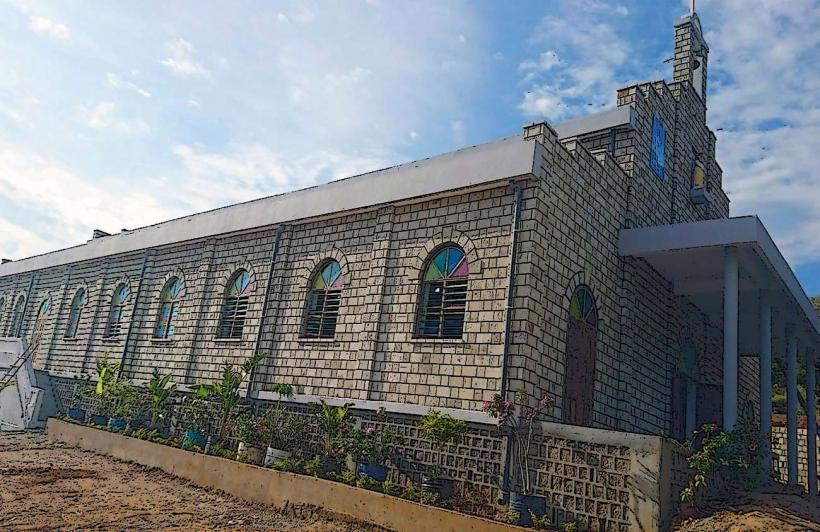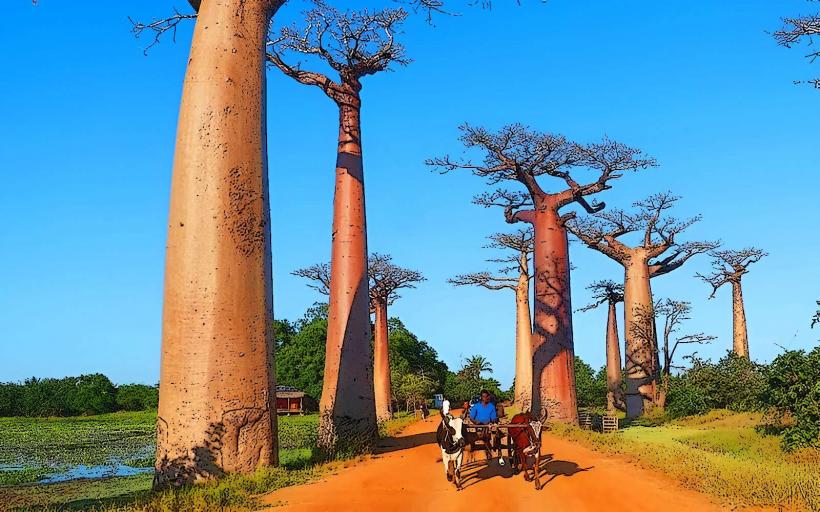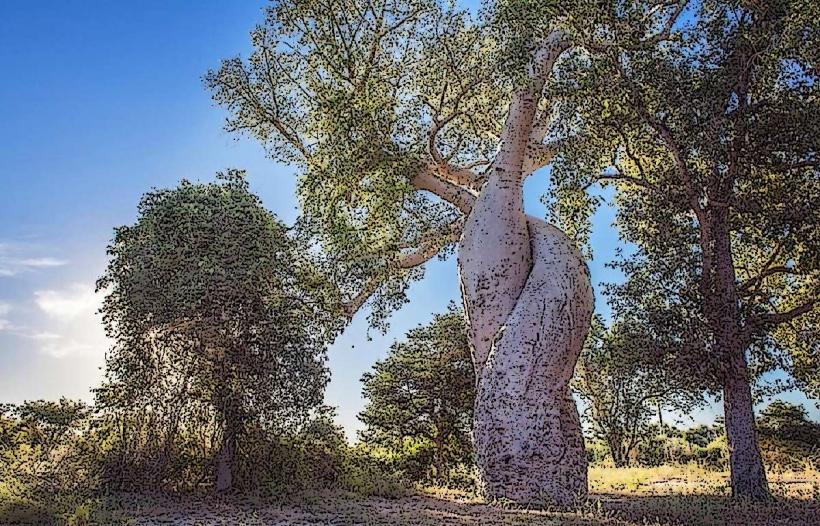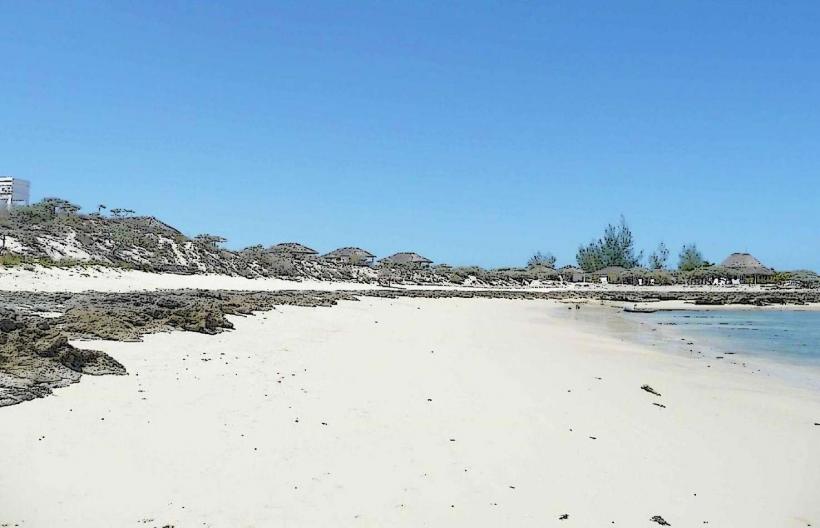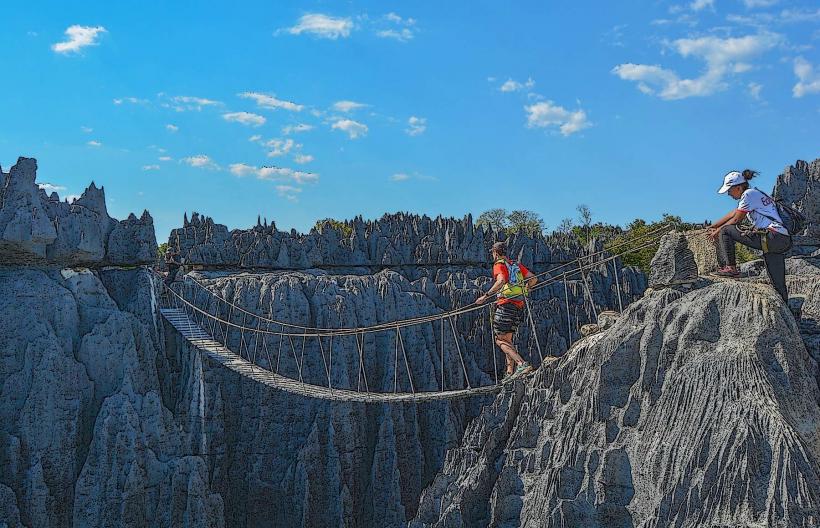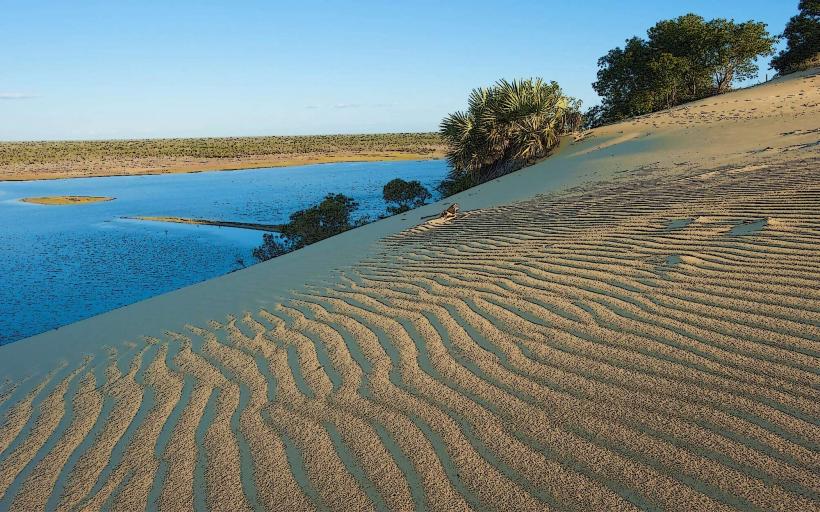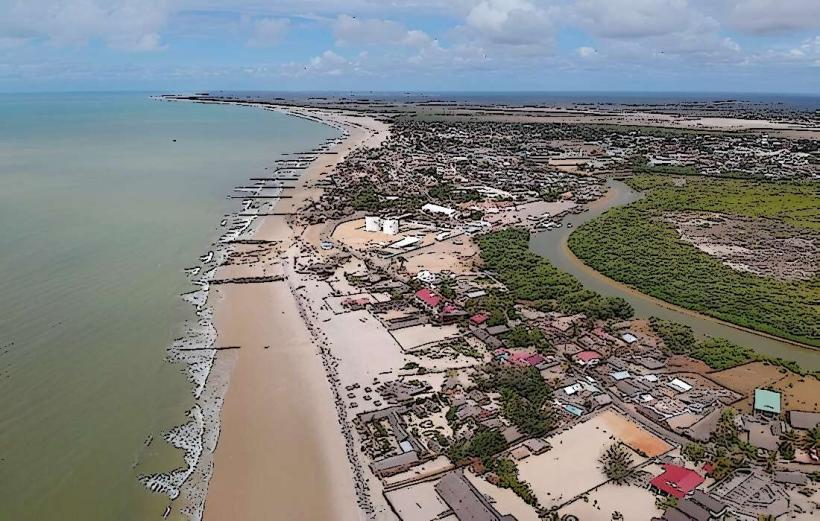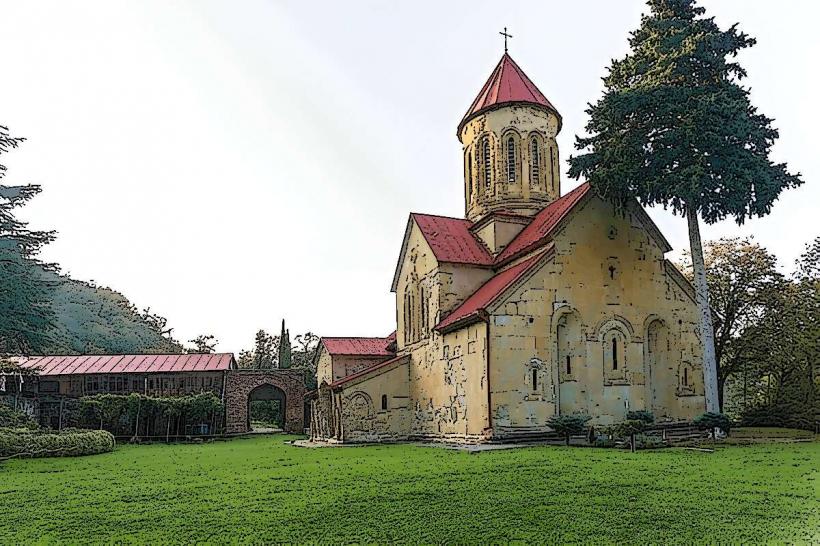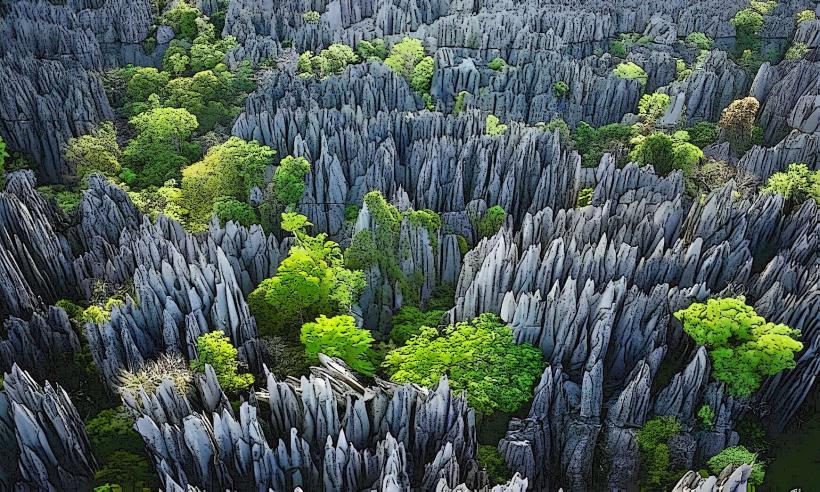Information
Landmark: Kirindy Forest ReserveCity: Morondava
Country: Madagascar
Continent: Africa
The Kirindy Forest Reserve is a protected area located in the Menabe Region of western Madagascar, near the Avenue of the Baobabs. It is known for its unique biodiversity, particularly its endemic species, making it a significant location for wildlife enthusiasts and researchers. Here are some key details about the reserve:
1. Geography and Location
Kirindy Forest Reserve is situated around 50 kilometers north of Morondava, on the western side of Madagascar. The forest is part of the dry deciduous forest ecosystem, which is typical of this region. This type of forest is characterized by trees that shed their leaves during the dry season, creating a unique environment for both flora and fauna.
2. Biodiversity and Wildlife
Kirindy is rich in biodiversity, particularly in terms of endemic species, meaning species that are found only in Madagascar. Some of the most notable wildlife in the reserve includes:
The Fossa: Kirindy is one of the best places to spot the fossa (Cryptoprocta ferox), Madagascar's largest predator. This carnivorous mammal is somewhat cat-like but related to the mongoose and is known for hunting lemurs and other small animals.
Lemurs: Kirindy is home to several species of lemurs, including the Verreaux's sifaka (Propithecus verreauxi), the red-fronted brown lemur (Eulemur rufifrons), and the white-footed sportive lemur (Lepilemur leucopus). These lemurs are adapted to the dry forest environment, with some species being active during the day (diurnal) and others at night (nocturnal).
Reptiles: The forest is also known for its diverse reptile population, including several species of chameleons like the Panther chameleon (Furcifer pardalis) and leaf-tailed geckos (Uroplatus species).
Birds: Kirindy hosts a variety of endemic bird species, such as the Madagascar kestrel (Falco newtoni) and the Madagascar harrier-hawk (Polyboroides radiatus).
Insects and Amphibians: The reserve is home to various species of frogs, insects, and other invertebrates, many of which are also endemic to Madagascar.
3. Climate and Seasonality
Kirindy Forest has a dry climate, typical of the western part of Madagascar. The region experiences a wet season from November to March, during which rainfall can be quite heavy. The dry season, from April to October, is the best time for visiting, as the forest is more accessible, and wildlife is easier to spot due to the thinner foliage. The dry season also makes it more comfortable for trekking, as temperatures are milder.
4. Ecological Importance
Kirindy is an important biodiversity hotspot in Madagascar. The reserve is part of the dry deciduous forest ecosystem, which is threatened by deforestation and climate change. This type of forest is home to species that have evolved to adapt to the harsh conditions of the dry season, making them incredibly unique but also vulnerable. Kirindy plays a crucial role in the conservation of these species and the maintenance of this fragile ecosystem.
The forest's rich diversity of flora and fauna, many of which are found nowhere else in the world, underscores the importance of protecting Madagascar's unique natural heritage.
5. Research and Conservation
The reserve is used for scientific research and has contributed valuable data on Madagascar's unique ecosystems. It is managed by the Wildlife Conservation Society (WCS) and is part of a broader conservation effort to protect Madagascar's forests. Kirindy is one of several key sites in Madagascar where researchers study the behavior, ecology, and conservation needs of the island's wildlife.
6. Activities and Attractions
Wildlife Viewing: The main draw of Kirindy is its wildlife. Visitors can participate in guided tours to spot various animals, including lemurs, fossas, chameleons, and birds. The best time to view wildlife is early in the morning or in the evening when animals are most active.
Night Walks: One of the most popular activities in Kirindy is night walks. Since many of the reserve's species, such as the sportive lemur and mouse lemur, are nocturnal, guided night tours offer a chance to observe these elusive creatures in their natural habitat.
Trekking and Hiking: Visitors can also enjoy hiking in the reserve. The trails take you through the dry forest, where you can observe both plant and animal life. The walks are relatively easy and can last anywhere from one to several hours.
7. Accommodation and Access
Accommodation around the Kirindy Forest Reserve is relatively basic but comfortable, with options including eco-lodges and simple guesthouses near the reserve. The facilities cater primarily to nature enthusiasts and researchers, providing a basic, rustic experience in harmony with the natural surroundings.
- Access: The reserve is accessible by road from Morondava, with the drive taking approximately 1-2 hours. The roads can be rough, especially during the rainy season, so it is advisable to visit with a guide or as part of a tour group, especially if you are unfamiliar with the area.
8. Nearby Attractions
Avenue of the Baobabs: Located not far from Kirindy, the Avenue of the Baobabs is a must-visit for tourists in the region, known for its striking landscape of towering baobab trees.
Tsingy de Bemaraha National Park: A UNESCO World Heritage Site, this park is famous for its dramatic limestone formations and is home to a variety of endemic wildlife, including lemurs and birds.
9. Conservation Challenges
Despite being a protected area, Kirindy faces several threats. These include:
- Deforestation: The forest is under pressure from logging and land conversion for agriculture.
- Climate Change: Changing rainfall patterns could affect the forest's delicate balance, impacting both plant and animal species.
Conclusion
The Kirindy Forest Reserve is a fascinating and ecologically important site, rich in Madagascar's unique biodiversity. It offers visitors an opportunity to witness rare and endangered species in their natural habitat and plays a vital role in the conservation of the island’s dry forest ecosystem. For those interested in Madagascar’s wildlife and ecosystems, a visit to Kirindy is a memorable and rewarding experience.

